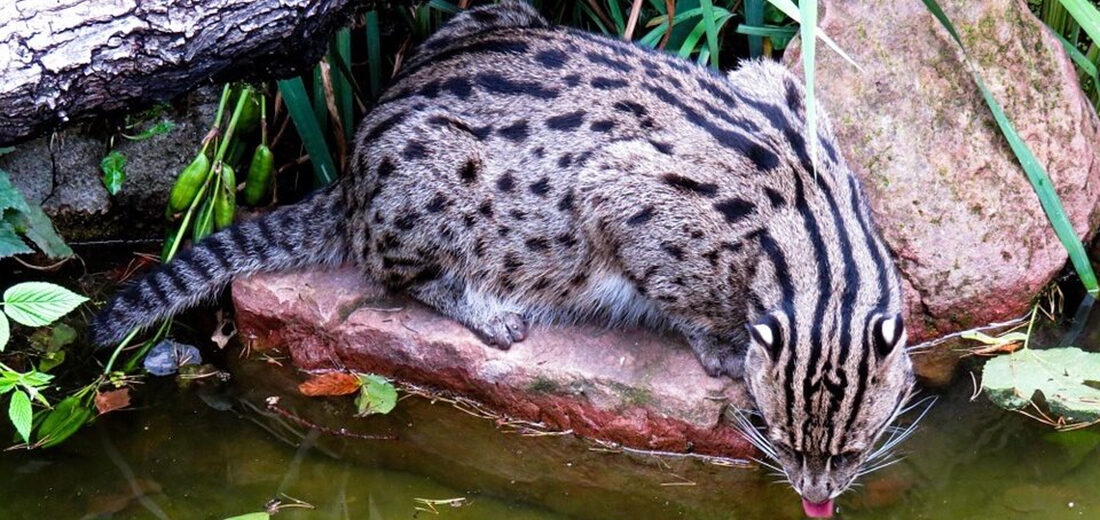
Residing in various parts of southern and southeastern Asia, the fishing cat breaks the rule of most other cats… don’t get wet. They prefer swamps, marshes, tidal forests, mangroves, and many other areas near streams, lakes, and rivers. These cats can be found at altitudes of up to 5,000 feet. Unfortunately, due to habitat destruction, water pollution, and poaching for their fur and meat these beautiful cats are listed as Vulnerable by the IUCN.
First the Stats…
Scientific name: Prionailurus viverrinus
Weight: Up to 20 lbs.
Length: Up to 2.6 feet, plus an 18 inch tail
Height: Up to 16 inches
Lifespan: Up to 12 years
Now on to the Facts!
1.) A fishing cat’s paws have webbing between their toes. This aids in their incredible swimming ability.
2.) Fishing cats are nocturnal (active at night).
3.) They communicate via hisses, guttural growls, and low, demanding meows. They also rely on scent marking, urine marking, and scratching on trees. During mating they communicate via a sound called chittering.
4.) These agile predators prey on fish, frogs, crabs, crayfish, water insects, snakes, rodents, and birds.
5.) Fishing cats are known to wash their food by dunking it in water.
But wait, there’s more on the fishing cat!
6.) Even though they look sweet. They are very aggressive felines!
7.) Like other cats, their ears have 32 muscles that are used to rotate their ears up to 180°.
Did you know…?
They have the ability to swim under water and catch water birds from below, by grabbing onto their legs and pulling them under.
8.) Females birth 2 – 4 kittens every January – February.
9.) When swimming they use their tail as a rudder for steering.
10.) When fishing, these cats will lightly tap the water to attract the fish. They then use their paws to grab the approaching prey or just dive in and catch them.
Now a Short Fishing Cat Video!
Also, check out the Critter Science YouTube channel. Videos added frequently!
Want to suggest a critter for me to write about? Let me know here.



